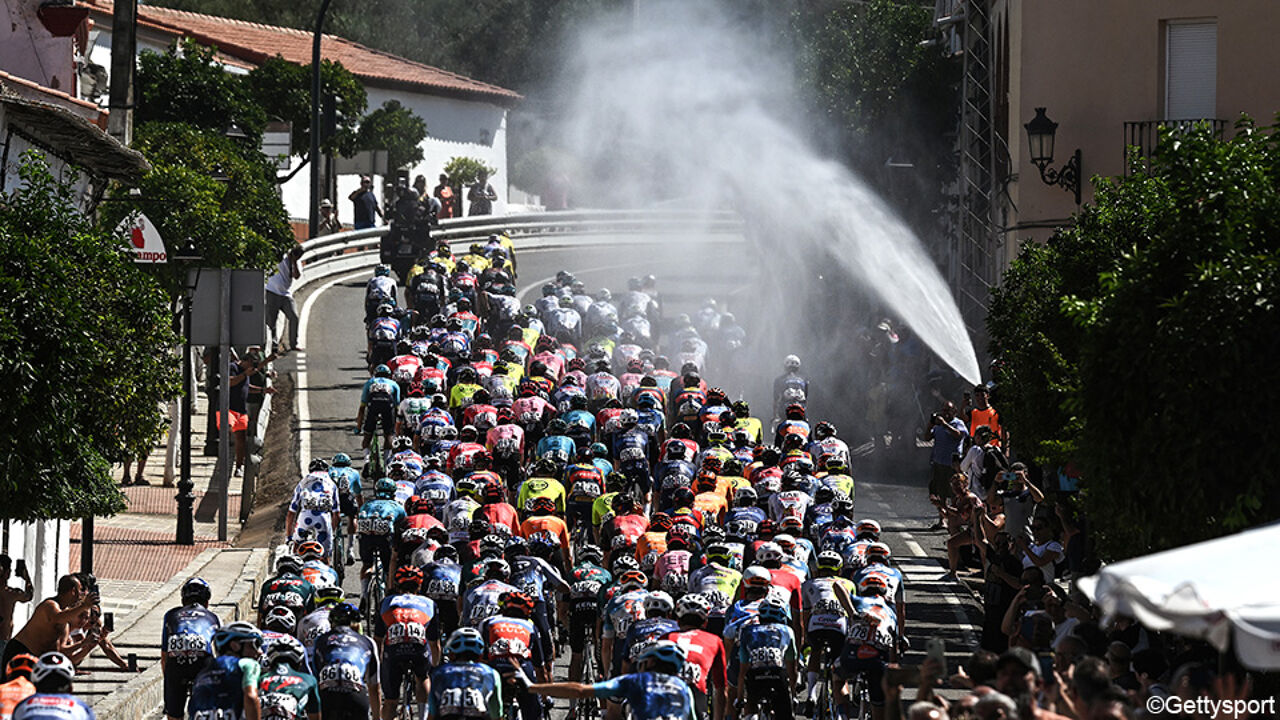Another day of sweating on the bike in temperatures approaching 40 degrees at the Vuelta. Cordoba is no exception, but it is particularly demanding on the health of the riders. When will the UCI Extreme Weather Protocol come into force and what measures can be taken to protect the peloton?
Riders who were hoping to spend the hottest day of the Vuelta – and therefore perhaps of the entire season – in Seville will be disappointed.
Temperatures are expected to rise even higher in Cordoba, the hottest city in Europe in the summer. Racing at 40 degrees is “on the edge of responsibility” according to sports doctor Ruud van Thienen.
Is the UCI Extreme Weather Protocol still in place? This question has become increasingly louder in recent days. Of course the answer is positive and since the beginning of this season there are special rules for hot days.
The UCI has added a High Temperature Protocol to the Severe Weather Protocol introduced in 2015, a more general framework for extremely cold or wet days.
In this new addition, a clear criterion has been added to the hitherto arbitrary interpretation of extreme weather. The WBGT (Wet Bulb Globe Temperature) index was intended to provide a clear framework.
WBGT measures the heat load of direct heat exposure. Not only air temperature is taken into account, but also humidity or radiant heat, for example.
The UCI operates a colour code in five specific zones, from the lowest white zone with very little risk to riders’ health (WBGT below 15°C) to the highest red zone with high risk (WBGT above 28°C).
Each zone also includes a number of recommended measures that can be applied. However, these are only recommendations: the final decision remains with the race organization in consultation with the other parties involved.
At the Vuelta, fans actually had to help cool down along the track.
More shade, drinks, ice or even neutralization.
What concrete measures can be taken in orange and red zones, with WBGT representing a medium to high risk to riders’ health?
The start location may be changed to a shaded area, more motorcycles may enter the race with extra cold drinks and ice, or the start time may change.
In extreme cases, certain parts of the stage may be neutralized or the entire stage may be cancelled.
Things won’t go quite so fast at the Vuelta, although cooling measures could still be taken into account when the hottest city in Europe is on the route in August.
Related to:

“Subtly charming internet specialist. Avid writer. Friendly alcohol guru. Music ninja. Devoted social media fanatic.”









More Stories
End of Vuelta ordeal: Belgian hope Lennert van Eetvelt out of Tour
This was a powerful opening ceremony for the Paralympics, steeped in symbolism and French charm.
Mathias Delorg helps KAA Gent reach sixth straight European group stage